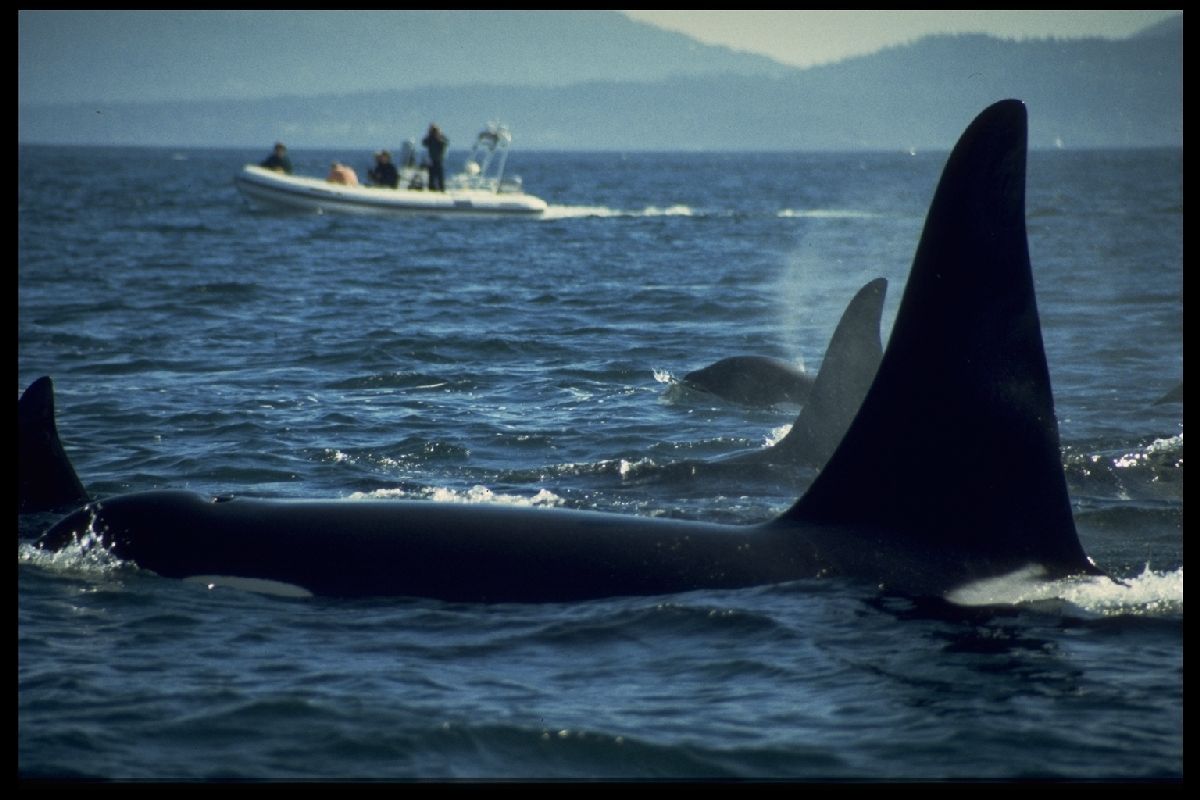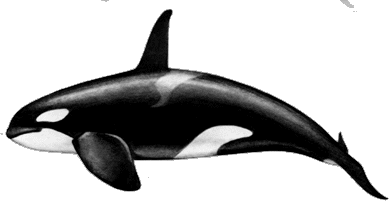| WHAT IS AN ORCA? |

|
| WHAT IS AN ORCA? |

|
Orcas are the largest member of the dolphin family, Delphinidae. Males grow to a maximum length of about 32ft (9.8m) and weight of 10 - 11 tons (9 - 10,000 kg) Females are smaller and grow to a maximum length of about 28ft ( 8.5m ), weighing as much as 7 -8 tons (6,500 to 7,500 kg). Calves at birth are about 8ft (2.4m) long and weigh about 400lbs (180 kg).
Orca bodies have distinctive black and white markings. Both females and males have similar markings except on the underside, where it is possible to distinguish male from female. The dorsal fin also distinguishes male and female adults. In the mature male the erect dorsal fin may reach a height of 5 1/2 ft. (1.7m) but the female dorsal fin grows only to an average of 3 ft. (0.9m)

|
Orcas are one of the toothed whales (Odontoceti), as are other dolphins and porpoises, pilot whales and sperm whales etc. Orcas have 10 to 13 pairs of interlocking conical teeth in the upper and lower jaws, usually a total of 48. Sperm whales have teeth only in the lower jaw. Orcas use their teeth primarily for grabbing prey. The number of rings within the teeth (anuili) may indicate how old an individual orca is, until about 30 years of age, when discrimination of new rings becomes difficult.
No one knows for sure how long an orca may live for, as the species has only
been intensively observed since about 1970. However, studies show that for
the Resident orcas along the Washington and B.C. coasts, females live an
average of 50 years and may live as long as 80 years. It is not clear why,
but males live significantly shorter lives, on average only about 30 years...
and may reach a maximum age of 50 years. The oldest males in the Pacific
Northwest study area are estimated to be just over forty years old. The mortality
rate of newborn orcas is still unclear, but it is almost certainly quite
high. Bigg et al estimated that it might be as high as 43% but did not have
a lot of confidence in this number as the sample rate was so small. Largely,
it was based on expected rates of reproduction and the pregnancy rate of
large numbers of orcas killed by "small-type" whaling in the North Atlantic.

|
To Residents - Social Structure |

|
Back to the main Orca-Facts |

|
Back to my homepage |